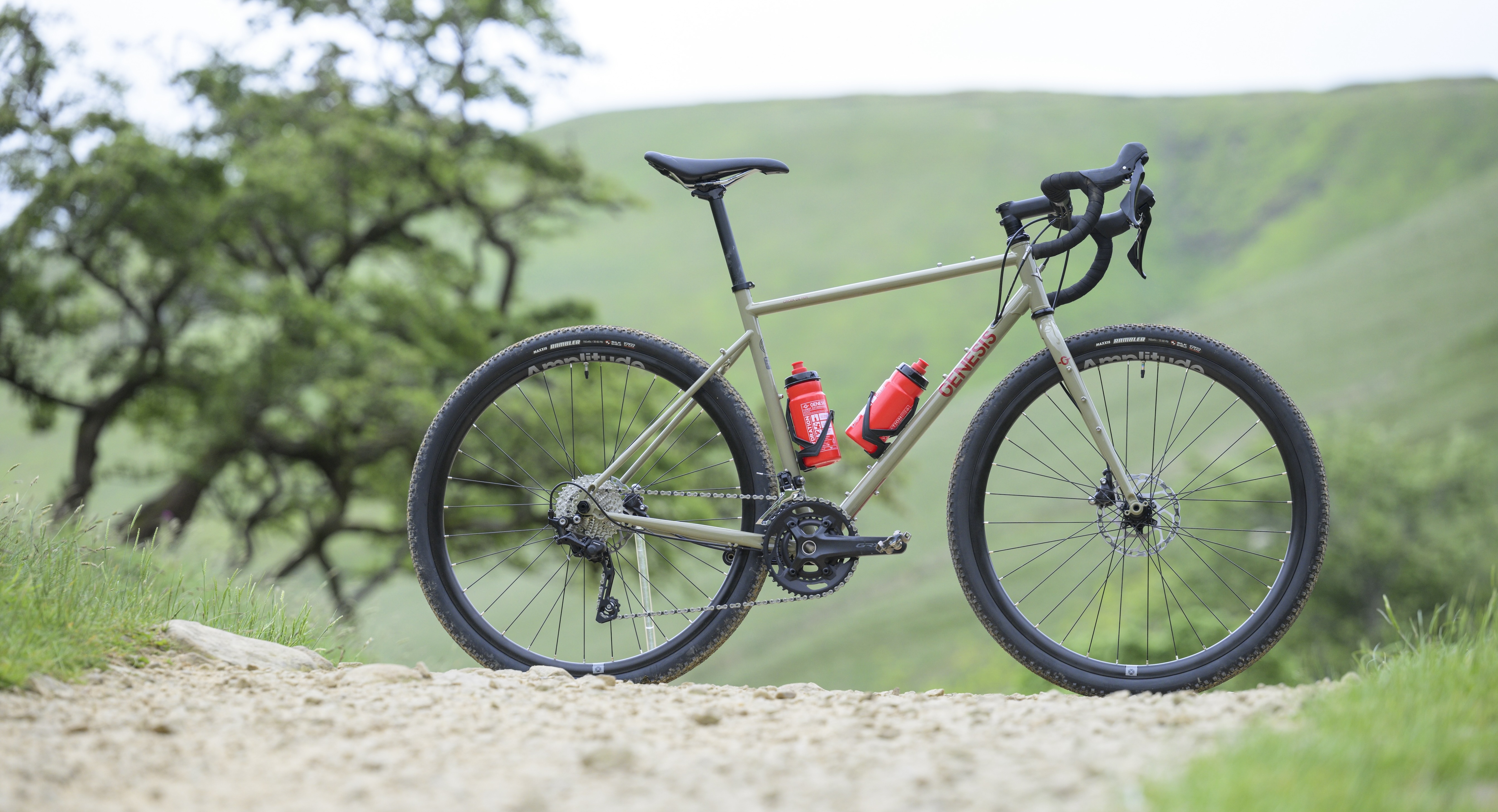
The Croix de Fer is an all-steel adventure bike, and it’s been around a while – 15 years now – with only minor tweaks along the way. In true hipster fashion it was into wide tires and disc brakes (albeit cable-operated) way before gravel bikes were a thing, so the alterations necessary as the years progressed were minimal. These changes came as tire sizes and gearing options ballooned, and as hydraulic shifters for drop bar bikes finally became available.
This new version represents the biggest redesign since that initial 2009 launch, but as the Croix de Fer’s only had small, incremental changes over the years anyway, it’s not like the result is an all-new machine. And that, to be clear, is a good thing.
The version I rode was a Croix de Fer 30, with a couple of small inconsistencies as it was actually the final prototype before the production run.
Firstly, the bosses on the fork were still angled back slightly, as per the previous bike, where the idea was to help centralize what mass you put there. In practice though, it could just cause clearance issues with the front wheel, so on the new bikes they’re set at the usual 90 degrees to the bike’s center line. In all other respects, the fork I rode was the same as the production one.
The second difference is the color, officially known as Blue Unlimited – it’s actually the color of the frame-only option. The production 30s will come in a greyish-white with red graphics, aka Pavement. It's the one in the main picture at the top.
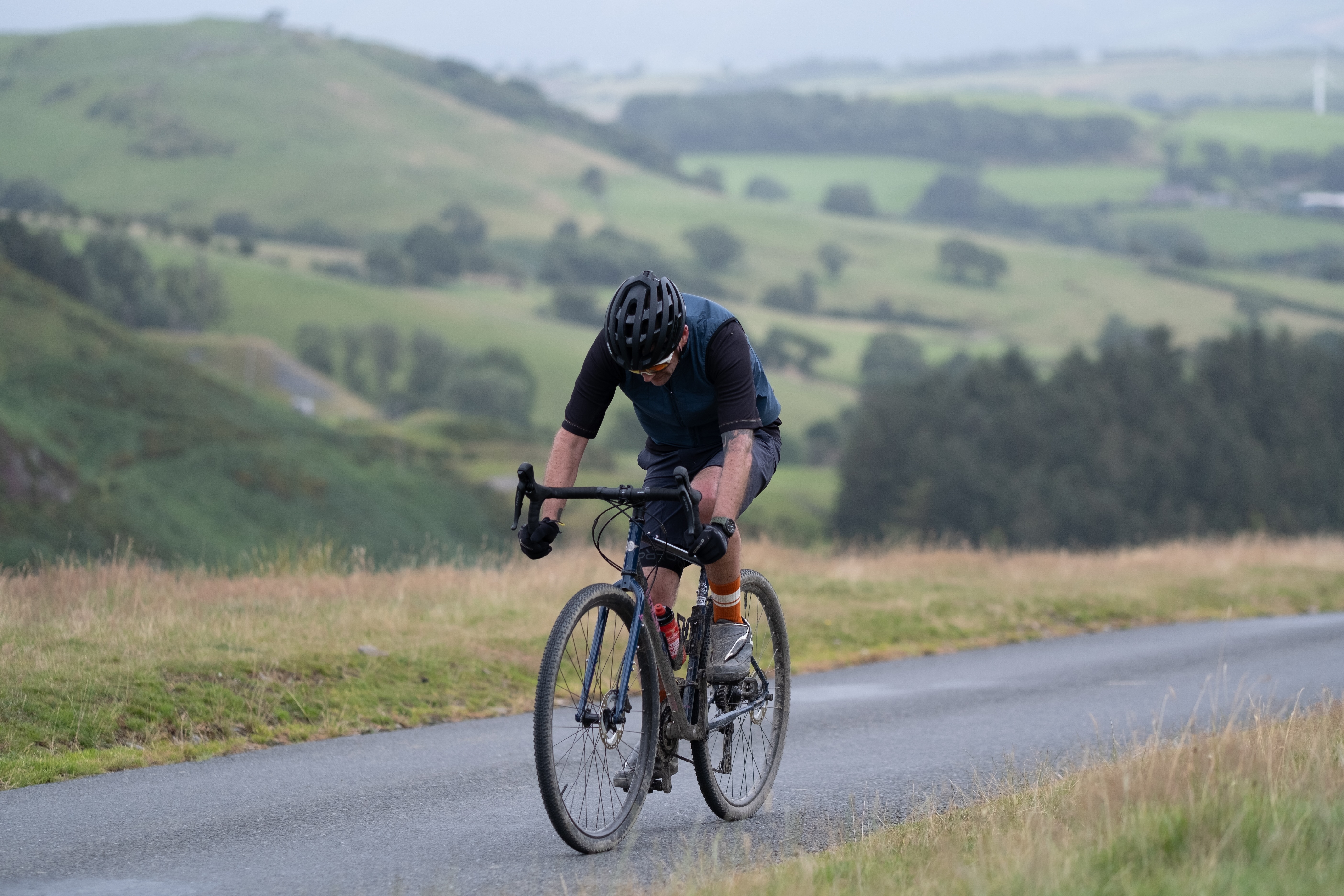
Design and specifications
The Croix de Fer comes in a host of builds, from the entry-level 10 to the carbon-forked 50, and both the 10 and 20 are available as flat bar bikes too. You also have no fewer than three frame-only options: a Reynolds 725 steel one (as I rode), a Reynolds 931 steel version, or titanium. The latter two also have carbon forks that drop around 900g from the total, but all other frames get a steel one, and for the record, the forks use Genesis’ own steel rather than Reynolds.
The CdF 30 sits right in the middle of the range, and of the stop-and-go kit, only the KMC chain is not Shimano. The brakes are Shimano GRX with 160mm rotors at both ends, the chainset and shifters are 2x10 GRX with a 30T inner ring and a 46T outer, and the cassette is a Shimano HG700 11-34T.
The 26mm wide wheels are from Genesis’ in-house brand Amplitude, and with 32 spokes on either end, they’re built for strength. Both wheels come fitted with 45mm Maxxis Rambler tires and are tubeless-compatible. You get valves, too. Oh, and the 12mm through-axles have levers that slide away inside while you’re riding – a clever little touch.
As you might expect, finishing kit parts such as the bars, stem, seatpost and saddle are in-house as well.
Geometry
The frame is where the biggest changes lie, though don’t go thinking this is now some long, slacked-out monster – Genesis has the Vagabond for that. This remains ‘gravel’ to the core. Comparing the new Medium frame with the old one, the head angle is just 0.5 degrees slacker at 71 degrees, the bottom bracket drop remains at 73mm and the seat tube angle is still 73.5 degrees. The top tube is slightly shorter, however, and the wheelbase is slightly longer at 1042.9mm, up from 1035mm.
The bars are wider at 440mm, and while widths are frame-size dependent, each option from XS to XL has had a 20mm bump for extra leverage and breathing room. They turn a fork that retains a straight steerer; Genesis says, at least for this bike and its uses, a tapered one adds weight and cost for very little benefit.
If stack and reach mean more to you, this size Medium works out at 584.7mm and 385mm respectively. The reach (measured from the center of the bottom bracket to the center of the head tube) actually stays pretty consistent across the sizes, with the differences being found in stack height and stem length.
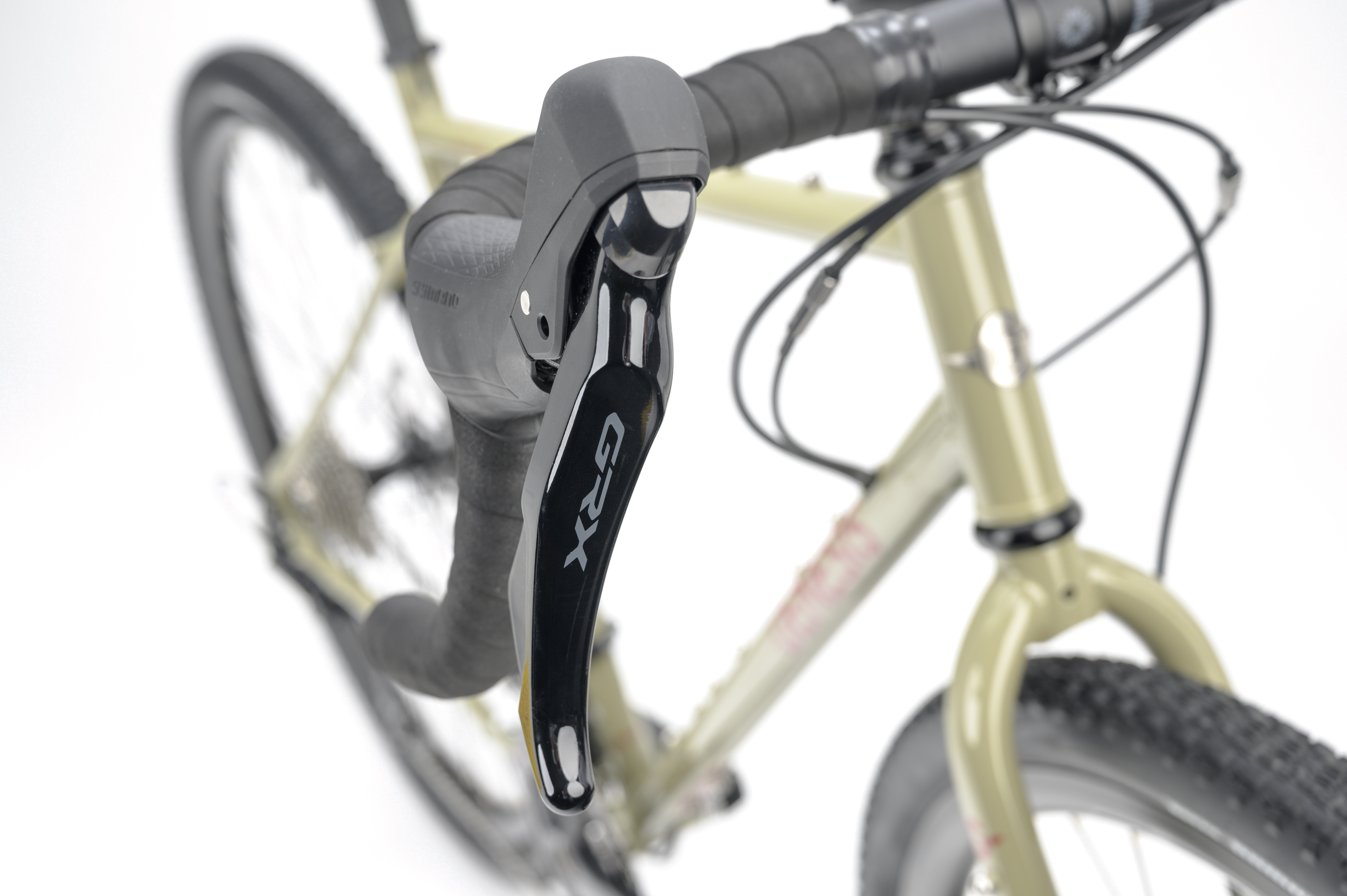
The real giveaway you’re looking at the new version is the switch to dropped seat stays – the old frames’ stays hit the seat tube in line with the top tube. The new top tube is ovalized, too, for a little more controlled flex. Genesis is quite open in saying the drop stays are also partly to add vertical flex, and partly just for looks. Internal cable routing cleans up those looks still further, and the seat tube is ready to accommodate a long dropper post – the upper bottle bosses have been repositioned.
There’s enough room to run 45mm tires with mudguards, or up to 47mm without.
First ride performance
The venue for this first test could hardly be better, as we’re in the northern half of Powys, Wales, exploring the Cambrian mountains and the sprawling pine forest tracks of Hafren. Guided by local expert Phill – the owner of The Lodge at Staylittle, our base for the day – our route covers 50 well-chosen kilometers of gravel, stony singletrack, backroad tarmac, and even a bit of grass and mud.
With 1,300m of climbing and descending, there’s plenty to test the gearing, brakes, and handling, and as the bracken, gorse and general foliage is in full summer sprawl, the half-obscured singletrack sections have quite a bit to test the reactions too.
To cut a long story short, the updated Croix de Fer handles it all with unwavering aplomb. Feeling calm, confidence-inspiring, and at home in every situation, whether that’s slicing down which-way-does-it-go-next singletrack or grinding up endless climbs to the clouds.
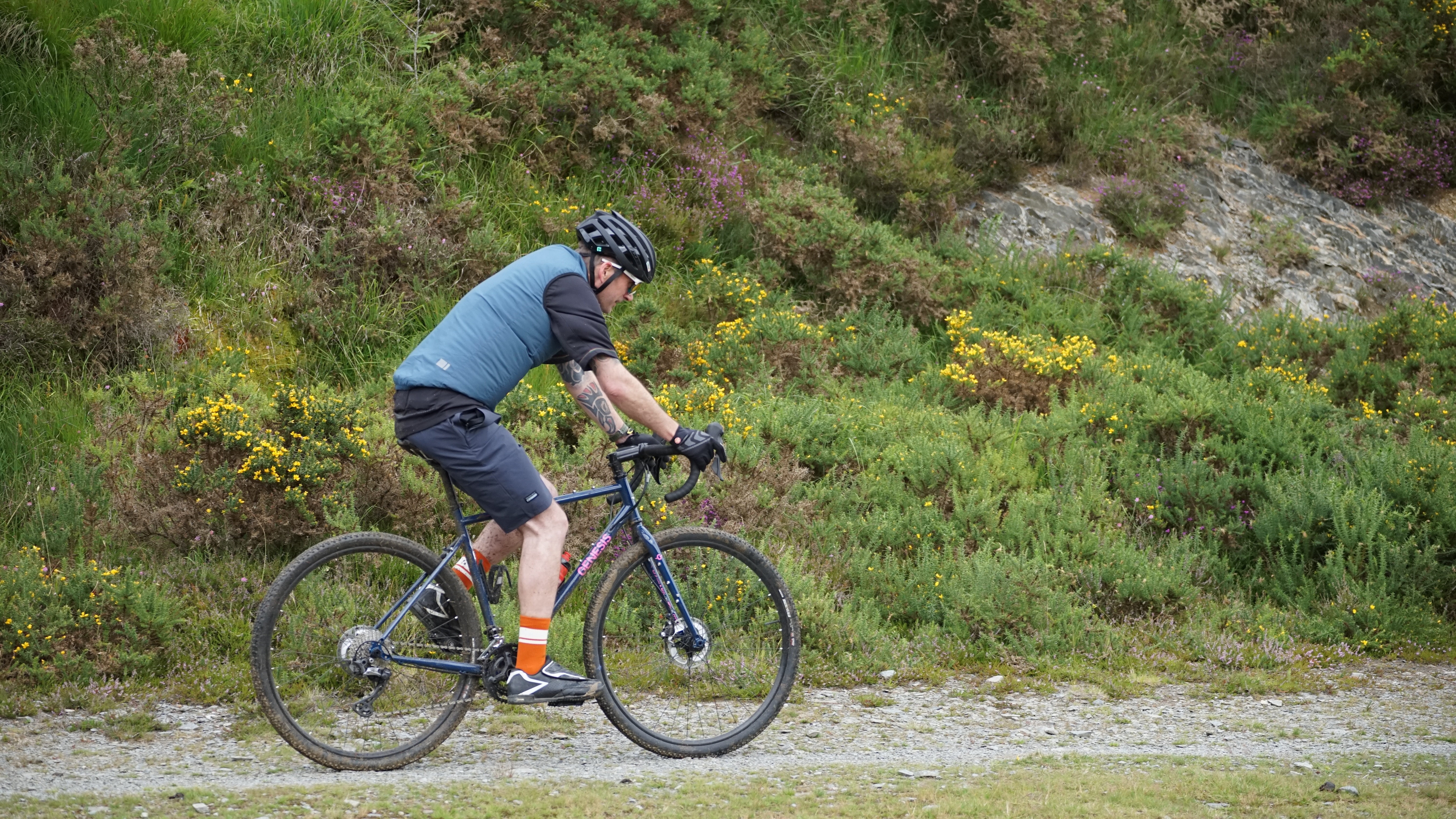
As the hours pass, I want for little more from the bike (if plenty more from my legs…), as the contact points and riding position work very naturally, from the saddle (very similar to the classic Charge Spoon in shape) to the thick bar tape. The fact I needed to do nothing more than adjust the seat height and set the tire pressures before a 4-5hr ride – and be happy – speaks volumes, I think, about the overall geometry and the position it creates.
It’s stable and comfortable on long or very steep and slow climbs, when spinning along on the flat, or when hooning down the longest gravelly plummets. Obviously, with its steel frame, conservative geometry, and basic aluminum componentry it’s no flighty, zippy racer, but neither does it ever feel dull or plodding. Genesis is yet to supply an official weight for it, but my guess would be around 21-22lbs (9.5-10kg). It’s a solid, yet fun and involving ride.
The Amplitude G-100 handlebar gives good steering accuracy but could be a little more compliant. By the end of our ride, my hands were a little sore, but at least that’s an easy future upgrade.
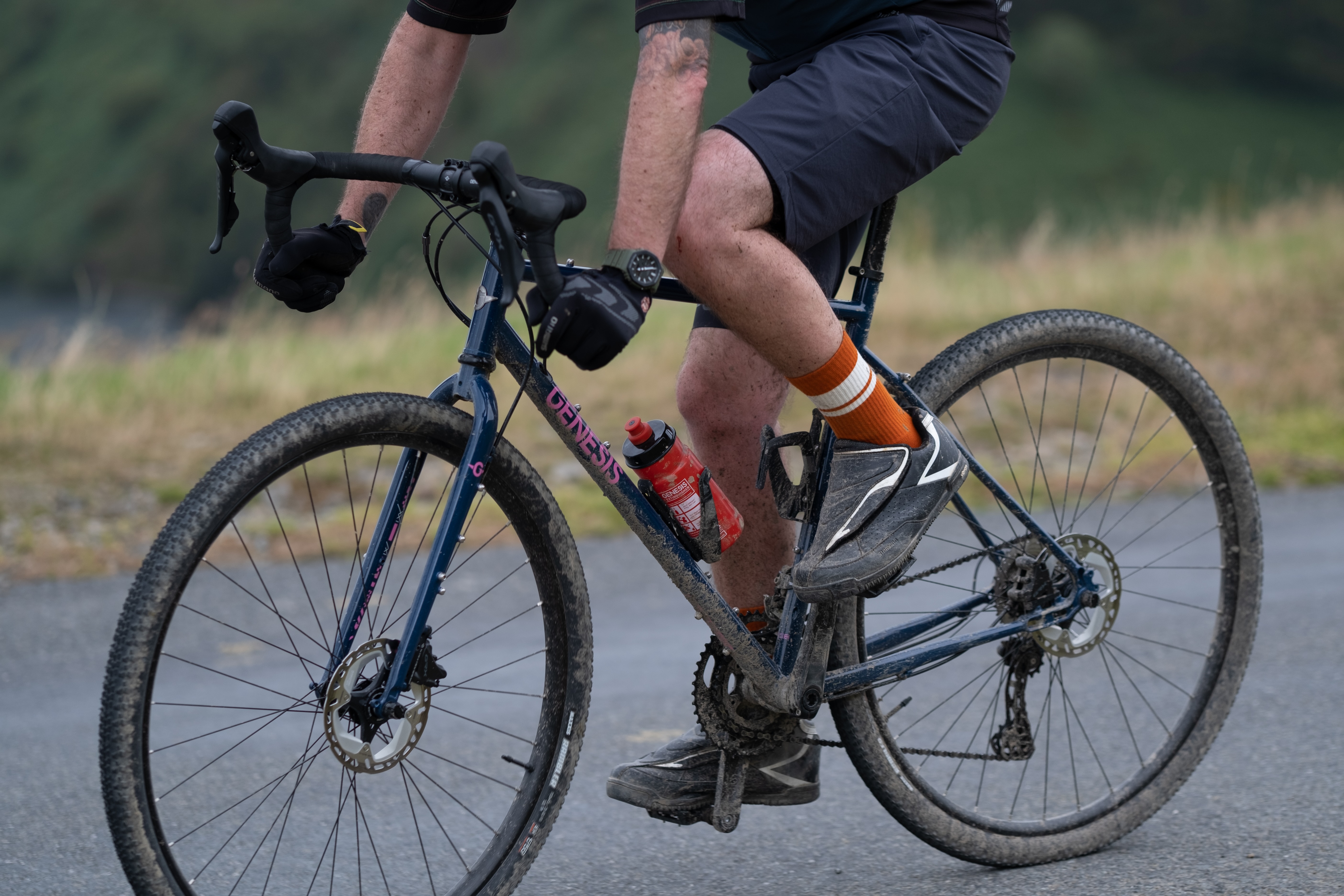
On fast, twisty, and unknown descents with often very limited vision, the Genesis is ideal, displaying a surefooted stability that’s still agile enough for lively riding. The GRX brakes bite hard and as usual are very easy to modulate, while the Maxxis Ramblers generate reliable grip and feedback on everything from fine gravel to wet stone jigsaws and fast tarmac descents.
They weren’t even terrible on grassy bits and peaty sections bomb-holed out with slithery puddles, so long as I didn’t do anything sudden, though proper muddy climbs and descents are beyond them. Some UK riders may want more aggressive treads for winter. And spring and autumn. And summer.
First ride verdict
The launch event test route was an ideal way to sample the new bike – it had pretty much everything this bike is designed to tackle (except, astonishingly for Wales, rain), and while my legs may have suffered, nothing else really did. The 2024 Croix de Fer never felt too heavy either on the climbs or through the rapid direction changes of the singletrack descents, and even with minimal setup, it proved a natural, neutral place to be. Only the slightly stiff handlebar did anything to let it down, but overall this bike is just easy company.
The price of £2,299.99 in the UK (€2,699 in the EU) gets you a Reynolds steel frame and full Shimano drivetrain and brakes, but if you want to spend less the range starts at £1,199/€1,399 for the flat bar CdF 10. Note that the 10 and 20 versions use different steel (Genesis Mjolnir) for the frames and feature narrower rear hubs and QR dropouts. The 30 is a meaningful step up from those, and a bike that will take pretty much whatever you throw at it with impressive sangfroid.
Tech specs: Genesis Croix de Fer 30
- Discipline: Adventure/gravel/touring
- Frame: Reynolds 725 steel
- Fork: Genesis CrMo, 50mm offset
- Reach: 395mm (XS) 395mm (S) 385mm (M) 395mm (L) 405mm (XL)
- Stack: 551.6mm (XS) 565.8mm (S) 584.7mm (M) 603.6mm (L) 622.5mm (XL)
- Head angle: 71 degrees
- Seat tube angle: 73.5 degrees
- Bottom bracket drop: 73mm
- Chainset: Shimano GRX RX600 2x10 speed
- Shifters: Shimano GRX RX400
- Bottom bracket: Shimano BSA 68mm
- Brakes: Shimano GRX RX400 hydraulic, 160/160mm discs
- Wheels: Amplitude G-100, 32-spoke alloy
- Tires: Maxxis Rambler TR, 45mm 700C
- Bars: Amplitude G-100, 460mm
- Stem: Amplitude G-100, 100mm
- Seatpost: Amplitude G-100, 27.2mm x 350mm
- Saddle: Madison Flux Switch, 142 x 280mm
- Sizes: XS, S, M, L, XL
- Price: £2,299.99 / EU €2,699







